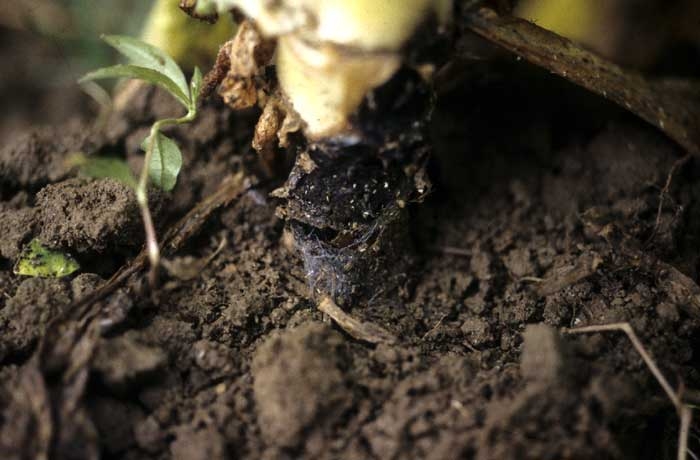
Various collar lesions
Lesions affecting the collar or the part of the stem near the soil line are mainly caused by parasitic diseases. Among them one can find bacteria such as Pectobacterium spp. or Ralstonia solanacearum. The fungi , such as Botrytis cinerea and Sclerotinia sclerotiorum, Calonectria Crotalarieae (formerly Cylindrocladium crotalaria) which causes wide splits on the collar, Macrophomina phaseolina, Rhizoctonia solani (figure 1), Sclerotium rolfsii (figure 2), Athelia rolfsii and Phytophthora nicotianae. Attacks of Haematonectria haematococca (formerly Fusarium solani, "Fusarium collar rot") were reported in Zimbabwe in sandy soils. In this country, light brown cankers were observed on the collar of tobacco, they are more superficial than those caused by Rhizoctonia solani. Note that mixed infections of these two fungi occasionally occur, they are in general much more damaging.
The nematode Ditylenchus dipsaci may attack the plant collar, it causes splits. Cortical tissues of the collar are swollen and distorted. They can decay and disappear, leaving an open vascular system. In the same way as for the "corky collar" tobacco easily collapses following the stem rupture under the weight of the plants and / or in windy weather ("stem break").
However, remember that a non-parasitic disease, "corky collar", may also be responsible for damage observed on plant collar.





